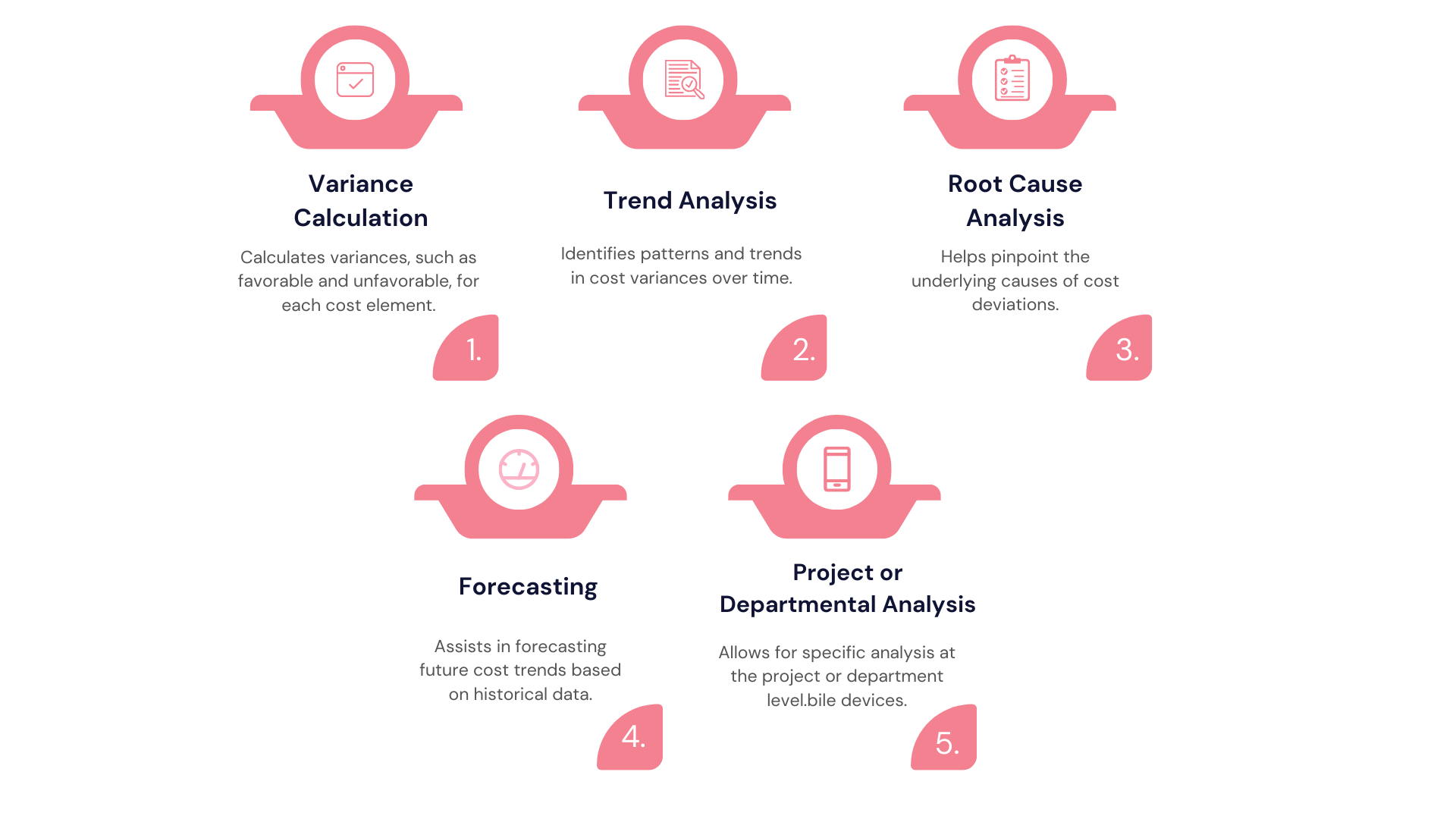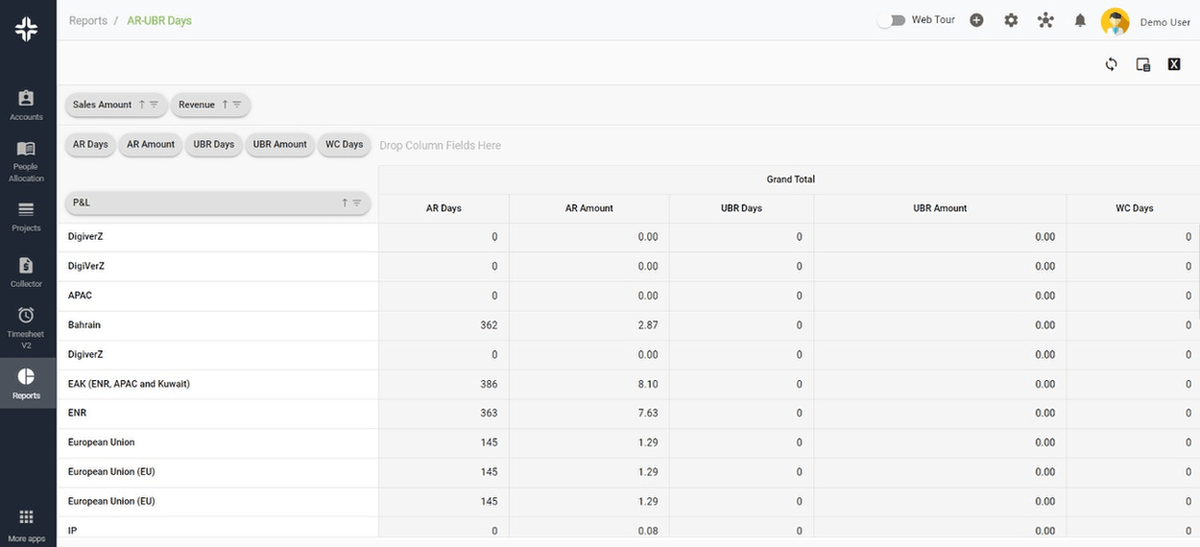Home » PSApedia
Cost Variance
Cost Variance measures the difference between the actual cost incurred on a project and the budgeted cost for that same work or activity.

Cost Variance (CV)?
Cost Variance (CV) is a financial metric that compares the estimated cost of a project to the actual expenses incurred. It’s calculated by subtracting the actual cost from the value earned (the estimated cost of the work actually completed). A positive CV signifies that the project is under budget, while a negative CV indicates it’s over budget.
Cost variance (CV) is a metric used in project management to measure the difference between the budgeted cost of work performed (BCWP) and the actual cost of work performed (ACWP) on a project.
Why is Cost Variance so Crucial?
CV is a critical measure of project performance and financial control. It allows project managers to identify whether a project is on track financially and prompts timely action if it’s not.
Understanding CV allows for better budget management, more accurate future project estimations, and improved stakeholder communication. It’s an essential tool in the project manager’s toolkit for ensuring project success and maintaining financial control..

Cost variance Analysis
How to Calculate the Cost Variance (CV)
Certainly! Here’s a concise summary for Cost Variance (CV)
Cost Variance (CV)
- Measures the financial performance of a project.
- Formula: CV = EV – AC
- EV: Earned Value (value of actual work done)
- AC: Actual Cost (actual spend).
Interpretation:
- (CV > 0): Project is under budget.
- (CV < 0): Project is over budget
- (CV = 0): Project is on budget.
Example:
For a bridge project:
– Planned value of half-completed bridge: $100,000 (i.e., EV).
– Actual spend to reach this point: $110,000 (i.e., AC).
Result: (CV = -$10,000) – project is $10,000 over budget.
Cost Variance vs Schedule Variance
While CV focuses on the financial aspect of project performance, Schedule Variance (SV) looks at the project’s timeline. SV compares the earned value with the planned value (the estimated value of the work planned to be done by a certain date).
While both CV and SV are critical for project management, they offer different insights. CV gives an understanding of the project’s financial health, while SV provides a view of the project’s progress against the schedule.
Cost variance measures the difference between the budgeted cost of work performed and the actual cost. A positive CV indicates the project is under budget, while a negative CV means it is over budget. In comparison, schedule variance measures the difference between the planned schedule progress and the actual progress. A positive SV means the project is ahead of schedule, while a negative SV indicates the project is behind schedule.
How is Cost Variance Used?
CV is used in several ways within project management. It’s a key part of project monitoring and control, helping identify whether a project is over or under budget at any given time.
CV is also used in performance reporting. By providing concrete data on the project’s financial health, it helps communicate project status to stakeholders and supports informed decision-making.
Moreover, CV can contribute to project forecasting, helping predict the project’s future financial performance based on current data.
Cost Variance, Budget, and Profit
| Aspect | Cost Variance | Budget | Profit |
| Definition | The difference between actual costs and budgeted costs. | A financial plan that outlines expected income and expenses. | The amount earned after subtracting expenses from revenue. |
| Focus | Monitoring and assessing cost control and management. | Planning and forecasting financial inflows and outflows. | Assessing overall business performance. |
| Calculation | Cost Variance = Actual Costs – Budgeted Costs. | Budget = Expected Income – Expected Expenses. | Profit = Revenue – Expenses. |
| Significance | Indicates how efficiently costs are managed. | Serves as a roadmap for financial operations. | Reflects the success or financial health of a business. |
CV, budget, and profit are closely interconnected. The budget is the project’s estimated cost, while profit is the difference between the project’s revenue and its actual cost.
CV directly influences both. A positive CV (meaning the project is under budget) can increase profits, while a negative CV (indicating the project is over budget) can reduce profits or even result in a loss. Therefore, effectively managing CV is crucial for meeting budget goals and maximizing profits.
Cost variance measures the difference between the budgeted and actual cost of work performed on a project. A positive variance indicates the project is under budget, while a negative variance means it is over budget. Strong budget management and keeping actual costs in line with the budget helps improve cost variance.
Streamlining Your Cost Variance Management with KEBS
KEBS, a leading Professional Services Automation Software, offers robust solutions for managing and optimizing your CV. With its real-time financial tracking and advanced analytics capabilities, KEBS allows project managers to monitor CV continuously, identify potential issues early, and take proactive action to keep projects on track financially.

KEBS Finance Management
Understanding and managing CV is crucial for successful project management and financial control. With tools like KEBS, you can take the guesswork out of CV management and drive your projects toward financial success.
Discover the KEBS demo right now. Should you have any inquiries, require support, or wish to connect with KEBS, feel free to reach out to us



